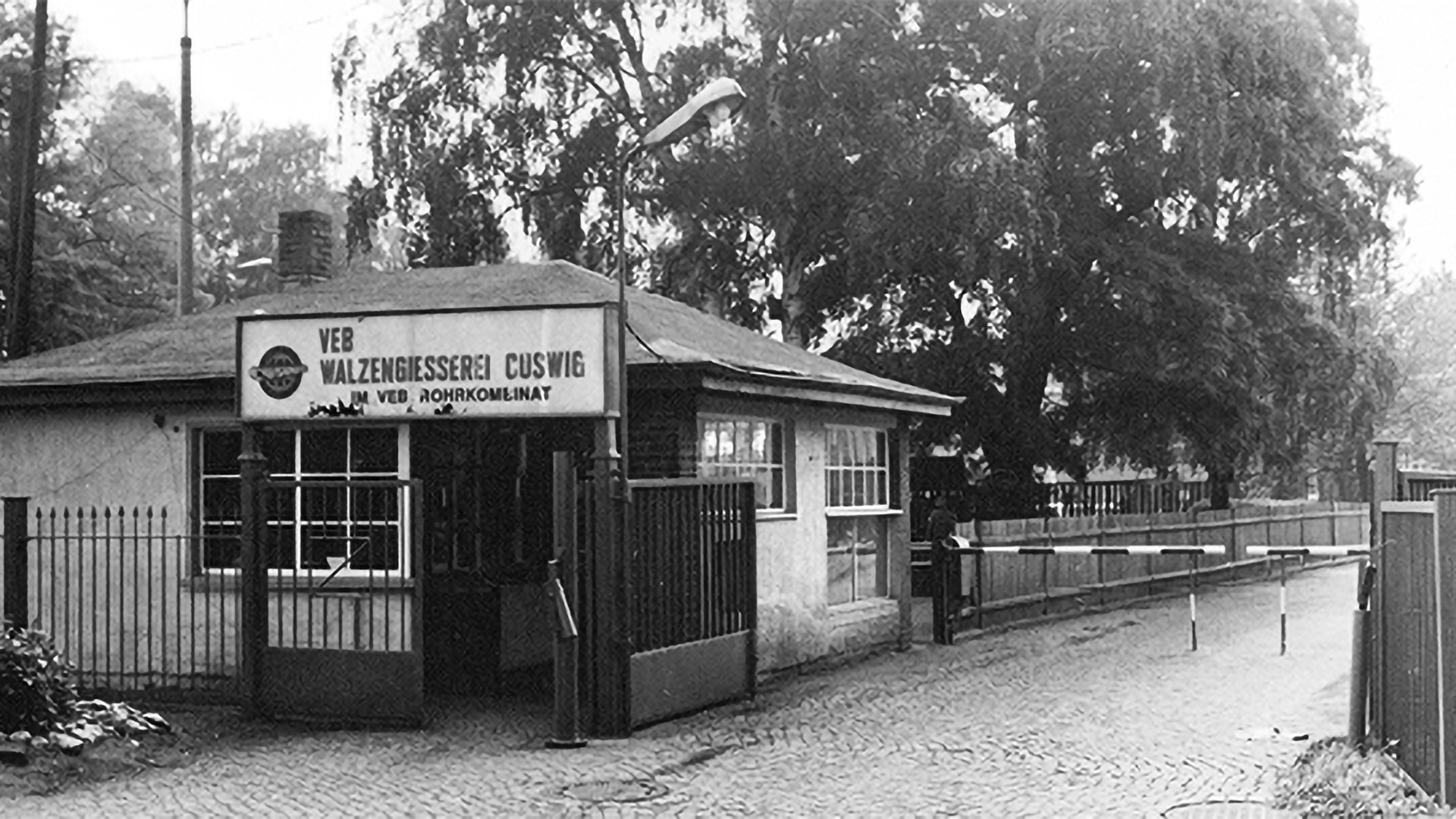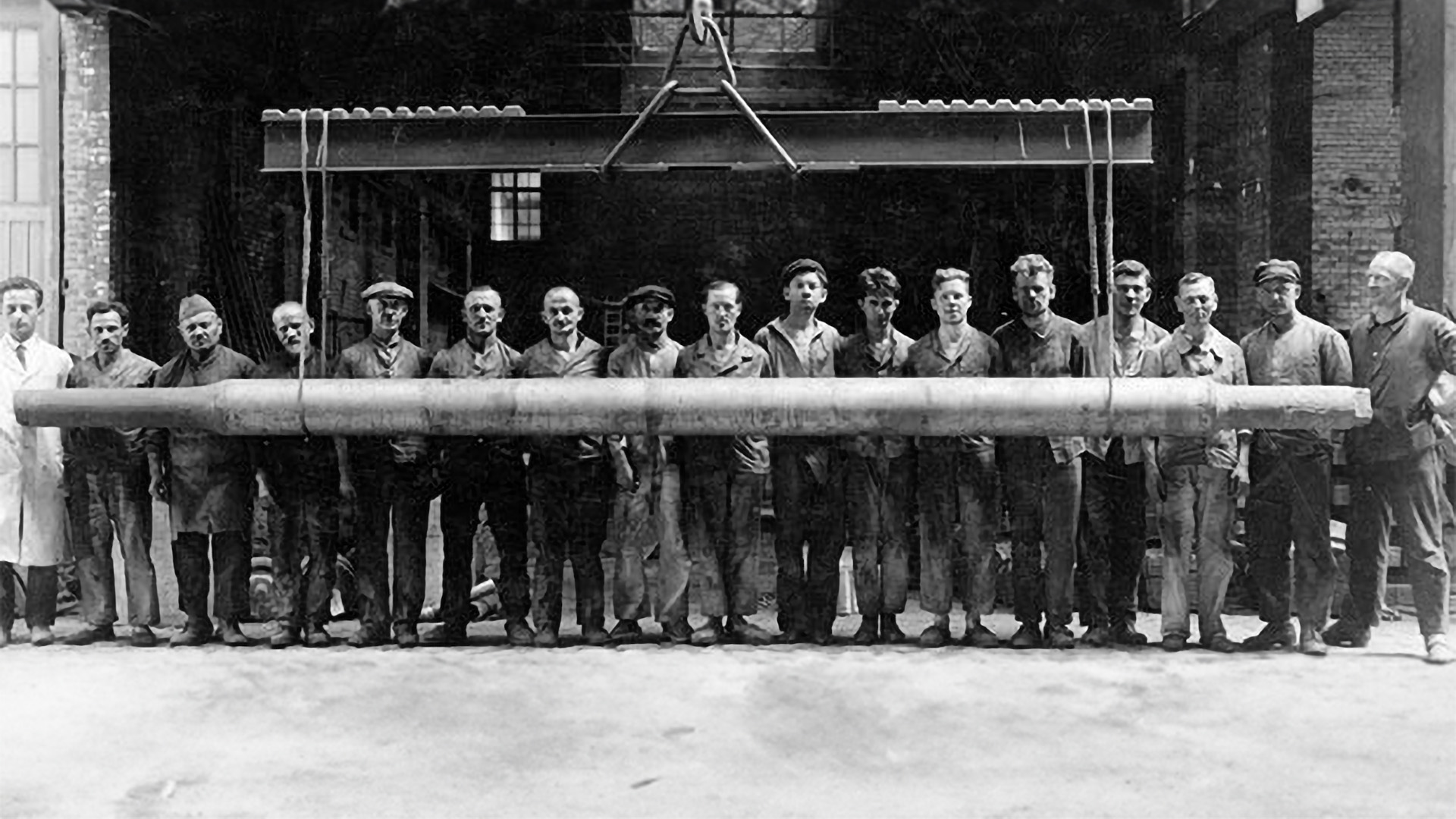History
Innovation as tradition
From a small ironworks to one of the most modern foundries in Europe - in its 125-year history, COSWIG GUSS has constantly developed itself and the casting process.
COSWIG GUSS has been merging traditional craftsmanship and modern technologies since 1892. With passion, experience and a spirit of research, we have pushed the boundaries of what is possible, mastered new challenges and won over new customers. Our high standards and our demanding customers are constantly driving us forward. Today, we produce and develop customized castings in our high-performance plant. We are one of the leading international suppliers in the manufacture of rolls and special components for wind turbines, industrial mills and printing machines.
But we are not resting on our laurels. We grow with our tasks. Then as now, COSWIG GUSS continues to research innovative concepts to make our products, processes and materials that little bit better. Join us on this journey into the future.
Milestones in the company's history:
2021
Investment in a double-girder overhead crane for Foundry I with a lifting capacity of up to 95 tons
2016
Development of a hollow rotor shaft made of solid solution strengthened cast iron
2015
Introduction of the high-chrome material (EN-GJN-HB555 - X Cr 14)
Investment in a further CNC high-performance lathe
2014
Introduction of solid solution strengthened cast iron (EN-GJS-450-18 and EN-GJS-500-14)
2013
Investment in a Leica 6DoF high-performance laser tracker
2012
Development and commissioning of an automated water tempering system for rolls
2011
Introduction of the new material NiHard (EN-GJN-HB555)
Investment in a further CNC high-performance lathe
2010
Delivery of hollow rotor shafts for the first German offshore wind farm »alpha ventus«
2009
Construction of a new foundry for hand mould casting at the Coswig site
Investment in two new annealing chambers and a CNC vertical lathe
2008
Investment in a further CNC high-performance lathe and a band saw
2007
Expansion of mechanical processing including air-conditioned measuring room
Development and test castings of insert bodies for fuel rod final storage containers (until 2012)
2006
New foundry hall with annealing chambers and a new roll forming shop
bis 2005
Further extensive investments in mechanical processing and foundry
2003
Development and production of prototypes of the hollow rotor shaft for the world's first 5 MW wind turbine
2000
Establishment of an in-house research and development department
1996
Takeover of Walzengießerei Coswig GmbH by the DiHAG group of companies
1995
Commissioning of the new medium-frequency induction furnace melting plant
1994

Start of production of components for mill construction
1993
Start of production of hand mould castings
ab 1967
After the production of segments for salt and copper mining was discontinued, the supply of printing cylinders to the Planeta Radebeul printing press plant began
1963

Commissioning of an 18-tonne electro-melting furnace and thus the development of steel rollers as well as the resumption of segment production
1946
After the end of the war, dismantling of the facilities as part of reparations, start of production of chilled cast iron rolls and, for the first time, rolls for hot rolling mills
1922/23

Expansive development through the construction of a modern machine moulding shop, the metal foundry with 3 melting furnaces, a new turning shop and an administration building
ab 1919
Casting of mixing, calender and milling rolls for the rubber, paper and food industries with excellent quality and export to many European countries
1914
Development of the world's first hot blast cupola furnace by company founder Eduard Schürmann
1895
After 3 years of construction, the first melt for the production of chilled cast iron, primarily for the railroad industry, as well as hand mould gray cast iron for mechanical engineering
1892

Eduard Schürmann founded the company Eisenwerk Coswig